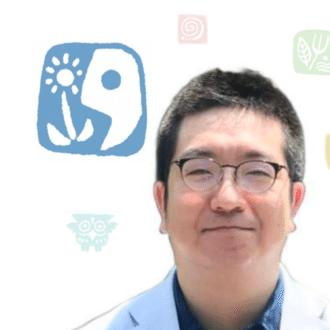
#5 Let's be aware of the structure of a story.
Not many people think that a "story" structure is helpful in medical practice. However, people have connected around "stories" and passed on to future generations the wisdom and experience necessary for survival, such as avoiding danger.
In "The Philosophy of Stories" (Iwanami Gendai Bunko), the philosopher Keiichi Noye explains that "a story is a linguistic device for passing on and communicating experiences. Stories are cultural devices that have been refined over time and place while remaining close to people. Understanding this structure has great potential to be helpful in medical practice.
There are several types of story structure, such as origins and endings, beginnings and ends, and heroes' journeys, but they all have in common that the stage and characters are explained at the beginning. This introduction allows us to follow and understand the story smoothly.
Why is the young man in the painting lying down?
What do we see when we look at the painting with the story's structure in mind? Let's think about it using the principle of "from the big picture to the smallest detail," which we discussed in the fourth issue of this series.

What is the stage background?
The view out the window, the structure of the room, and the exotic, fashionable clothing suggest a Western rather than an Asian background.
Who are the characters?
The wrinkle-free, well-formed face suggests a young man in his teens or twenties. The black soot-like substance on his clothes and the dirty bed suggest poverty.
How about a detailed description?
On the bedside table to the right is a candlestick with smoke wafting from it. The fire has just been extinguished, probably at dawn.
Let's focus on the man again. He is lying on the bed with his eyes closed and face peaceful, his arms outstretched. One of his shoes is still on the floor. He may have slumped onto the bed. Thinking about it, don't you see the connection with the brown vial lying carelessly on the floor at once? Looking at the torn sheaf of paper in the lower-left corner, we can imagine a young artist grieved by the lack of public recognition of his work and committed suicide. By observing the paintings, a story vaguely emerges.
Understanding the patient's "story" and taking a holistic approach
Let's look at how understanding the story can be used in the clinical setting. Patients who come to see the doctor tell a "story" about the onset of their symptoms, how they came to see the doctor, and how they interpret the story. First, the healthcare provider will understand the patient's background, relationships, and the impact of the disease as an introduction. Then, while respecting the patient, the medical staff will engage the patient's "story" by detecting non-verbal information such as facial expressions and engaging in dialogue with the patient. At this point, if the medical staff tries to evaluate the patient unnecessarily or if they come across as uninterested, the patient may clam up.
Even the most advanced tests cannot "detect" a patient's story. For example, a patient who has been drinking since the morning and has become intoxicated and fallen is seen. As a medical professional, you may scold the patient or be appalled. However, there may be a hidden story behind the patient's fall: "He lost his job and family for unreasonable reasons and was desperate. Only you can "detect" it.
Based on the patient's story obtained through dialogue, we must be mindful of the patient's medical care context. I believe that this will allow us to take a "holistic" approach that includes physical, mental, psychological, and social perspectives and is not the sole prerogative of the medical staff. In our practice, stories can serve as a compass to help us build our practice from a meta-perspective.
from
いいなと思ったら応援しよう!

